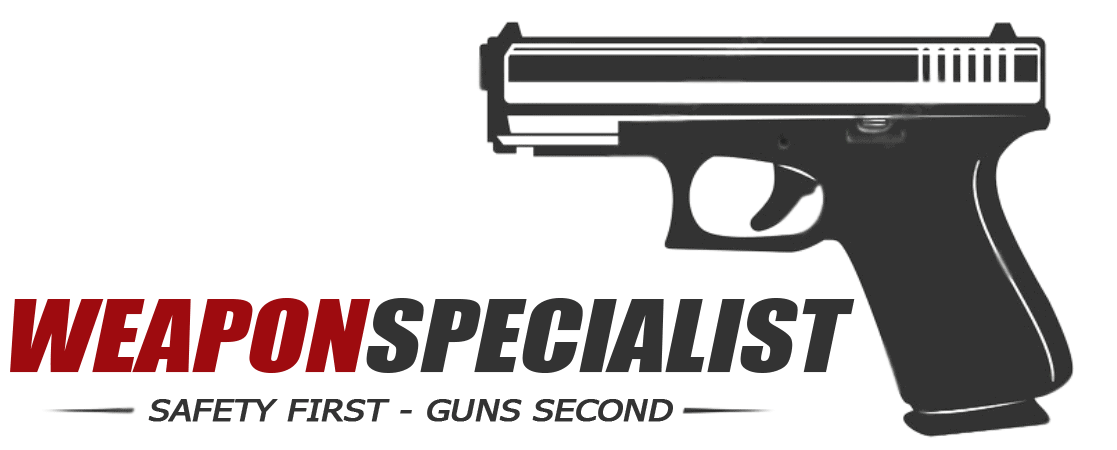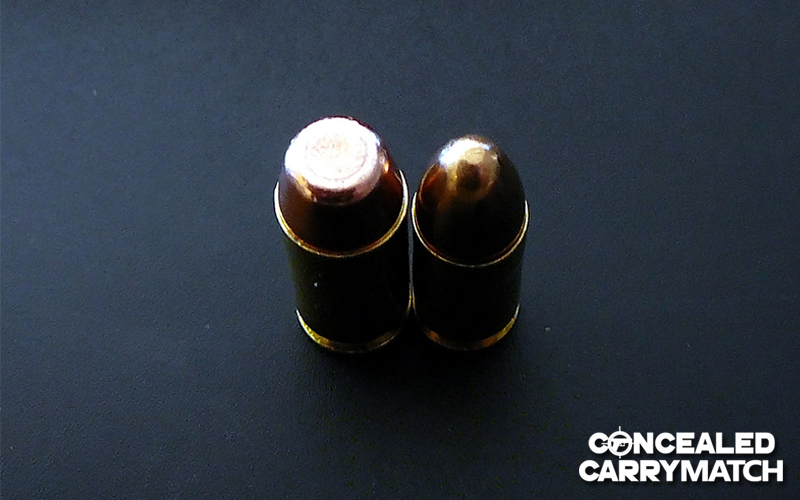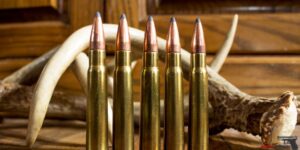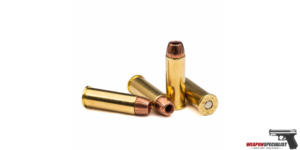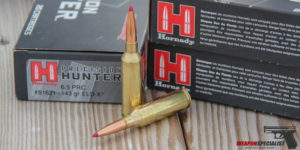10mm vs 44 Mag are two favorite cartridges of many professional hunters because of their mighty destructive power. Both have many features and technology for self-defense and fighting the bad guys. So what is the main difference between 10mm vs 44 Magnum?
In the article below, I’ll go into the in-depth pros and cons of each to help you make your final judgment. Let’s read on to discover!
What is 10mm bullet?
The 10mm Auto is a semi-automatic pistol cartridge that was developed in 1983 by the late Col. Jeff Cooper, who wanted to create a cartridge that would be more powerful than the .45 ACP but not as powerful as the .357 Magnum.
The 10mm Auto is a rimless cartridge that uses a .400-inch-diameter bullet and is typically loaded with bullets that weigh between 150 and 200 grains.
The 10mm Auto is a powerful cartridge that is capable of producing significant energy and penetration. It is often used for hunting, personal defense, and law enforcement applications.
The 10mm Auto is a versatile cartridge that can be used in a variety of handguns. Some of the most popular 10mm Auto pistols include the Glock 20, the Smith & Wesson M&P 40, and the Springfield XD-M.
The 10mm Auto is also a popular choice for competition shooting, particularly in the International Practical Shooting Confederation (IPSC).
The 10mm Auto is a powerful cartridge that can be effective in a variety of applications. However, it is important to note that the 10mm Auto can produce significant recoil. It is important to choose a handgun that is comfortable to shoot and to use proper shooting techniques to manage the recoil.
Specification
- Bullet Diameter: The 10mm bullet typically has a diameter of approximately 0.400 inches or 10.16mm.
- Bullet Weight: Bullet weights for 10mm ammunition can vary widely, but common bullet weights range from 135 grains to 220 grains. Heavier bullets tend to have more recoil but can offer better penetration, while lighter bullets may have less recoil but may sacrifice some penetration and stopping power.
- Muzzle Velocity: The muzzle velocity of 10mm ammunition depends on the specific load and bullet weight. It can range from approximately 1,000 feet per second (fps) for lighter bullets to over 1,300 fps for some hotter loads with lighter projectiles.
- Muzzle Energy: Muzzle energy also varies depending on the specific ammunition. It can range from around 400 foot-pounds of energy (ft-lbs) for lighter loads to over 700 ft-lbs for hotter loads with heavier bullets.
- Bullet Types: 10mm ammunition is available with various bullet types, including Full Metal Jacket (FMJ) for target shooting, Hollow Point (HP) for self-defense, and specialty loads for hunting and other specific purposes.
- Recoil: The 10mm cartridge generates significant recoil, which can be sharp and snappy, especially in lightweight handguns. Shooters should be prepared for the recoil when using 10mm ammunition.
- Use: The 10mm Auto cartridge is used for a variety of purposes, including self-defense, target shooting, and hunting. It’s known for its flat trajectory and good stopping power, making it a versatile choice for handgun enthusiasts.
What is .44 Magnum ammo?
.44 Magnum ammo is a type of ammunition that is designed for use in .44 Magnum firearms. It is a powerful cartridge that is capable of delivering a significant amount of energy to its target. .44 Magnum ammo is typically used for hunting large game, such as deer and bear, as well as for personal defense.
.44 Magnum ammo is available in a variety of different bullet weights and types. The most common bullet weights for .44 Magnum ammo are 180, 240, and 300 grains. The most common bullet types for .44 Magnum ammo are full metal jacket (FMJ), jacketed soft point (JSP), and jacketed hollow point (JHP).
FMJ bullets are designed to penetrate their target without expanding. They are typically used for target shooting and hunting. JSP bullets are designed to expand upon impact, creating a larger wound channel.
They are typically used for hunting and personal defense. JHP bullets are designed to expand upon impact and transfer their energy to the target. They are typically used for personal defense.
.44 Magnum ammo is a powerful cartridge that can be dangerous if not used properly. It is important to always follow the safety guidelines when handling and using .44 Magnum ammo.
Specification
- Bullet Diameter: The bullet diameter for .44 Magnum ammunition is typically around 0.429 inches (10.9mm). This is a relatively large bullet diameter compared to many other handgun cartridges.
- Bullet Weight: Bullet weights for .44 Magnum ammunition can vary widely, but common bullet weights range from 180 grains to 300 grains or more. The choice of bullet weight depends on the intended purpose, with heavier bullets often chosen for hunting and lighter ones for target shooting or self-defense.
- Muzzle Velocity: The muzzle velocity of .44 Magnum ammunition depends on the specific load and bullet weight. On average, it ranges from approximately 1,200 feet per second (fps) to 1,600 fps. Again, this can vary significantly based on the manufacturer and load.
- Muzzle Energy: .44 Magnum cartridges are known for their high muzzle energy. Typical muzzle energies range from 800 foot-pounds of energy (ft-lbs) for lighter loads to over 1,200 ft-lbs for heavy hunting loads. Some specialty loads can produce even higher muzzle energies.
- Cartridge Case Length: The overall length of a .44 Magnum cartridge case is about 1.285 inches (32.64mm). This length accommodates the large bullet and the substantial powder charge.
- Pressure: .44 Magnum ammunition operates at relatively high pressures. SAAMI (Sporting Arms and Ammunition Manufacturers’ Institute) sets the maximum average pressure for .44 Magnum at around 36,000 pounds per square inch (psi).
- Bullet Types: .44 Magnum ammunition is available with a variety of bullet types, including full metal jacket (FMJ), hollow point (HP), soft point (SP), and specialty bullets designed for specific purposes like hunting or self-defense.
- Reloadability: .44 Magnum cartridges are reloadable, and many enthusiasts reload their own ammunition to tailor it to their specific needs and preferences.
Quick 10mm Vs 44 Mag Comparison Table
| Feature | 10mm | .44 Magnum |
|---|---|---|
| Origin | United States | United States |
| Bullet Diameter | 10.16mm | 10.9mm |
| Bullet Weight Range | 135-230 grains | 180-300 grains |
| Muzzle Velocity Range | 950-1,400 fps | 1,300-1,600 fps |
| Muzzle Energy Range | 450-750 ft-lbs | 900-1,400 ft-lbs |
| Recoil | Moderate to strong | Strong to very strong |
| Common Use | Self-defense, law enforcement | Hunting, self-defense |
| Firearm Types | Semi-automatic pistols, some revolvers | Revolvers |
| Popular Firearms | Glock 20, Colt Delta Elite | Smith & Wesson Model 29, Ruger Super Redhawk |
| Availability | Widely available | Widely available |
| Cost | Moderate | Moderate to high |
| Overall Power | High | Very high |
10mm and 44 Mag Similarities
While 10mm and .44 Magnum are both handgun cartridges, they are quite different in terms of size, power, and typical usage. However, there are a few similarities between them:
- Handgun Cartridges: Both 10mm and .44 Magnum are designed for use in handguns. They are not commonly used in rifles or other firearms.
- Revolver Compatibility: Both cartridges can be used in revolvers, although 10mm is more commonly associated with semi-automatic pistols.
- Recoil: Both cartridges produce significant recoil due to their power. Shooters using these cartridges should be prepared for strong recoil forces.
- Hunting Capability: Both 10mm and .44 Magnum are capable of taking down medium to large game animals when used with appropriate ammunition. They are popular choices for hunting handguns.
10mm and 44 Mag Differences
Size
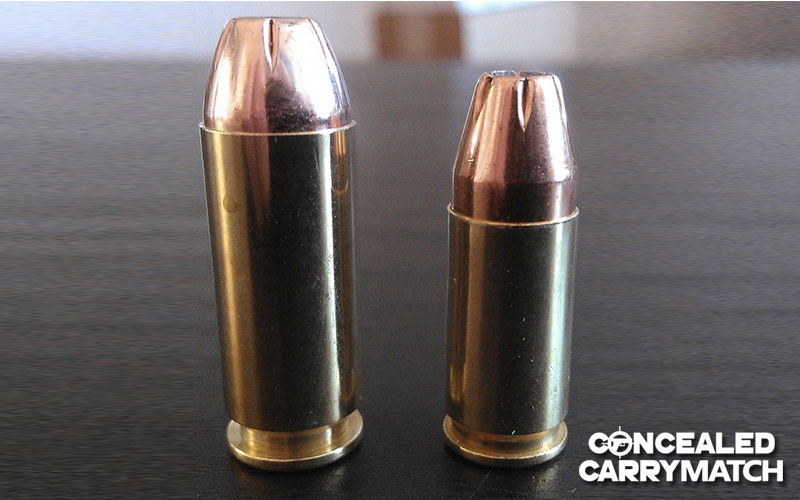
The standard diameter of the 10mm bullet is 0.40 inches, about 0.29 inches lower than the 44 Mag version.
Meanwhile, the rim diameter of the 10mm is much smaller than its rival, at 0.425 and 0.514 inches, respectively. This difference in diameter will somewhat affect their ballistic performance.
In terms of length, 44 Mag owns a total length of about 0.35 inches longer than its other rival. Therefore, the number of particles of these two bullets also varies.
With 44 Mag, there are about 180 – 300 grains, while at 10mm, this parameter is only about 150 – 230 grains. This feature is partly related to the ability to shoot and the gun’s performance, so you must consider it carefully.
Handgun Options
Both cartridges can be available for a variety of pistols. The 10mm automatic bullet version will usually be made for semi-automatic pistols. Meanwhile, 44 Mag’s best performance is for revolvers.
So, can 10mm be used for revolvers and vice versa?
The answer is yes, but the performance is not perfect. Incompatibility can cause bullets to get stuck inside or deviate quite a bit, even if the target is at the closest distance.
10mm Handgun Options:
- Glock 20: The Glock 20 is a popular semi-automatic handgun chambered in 10mm. It offers a high magazine capacity and is known for its reliability.
- Sig Sauer P220: The Sig Sauer P220 is a full-size, single-stack handgun available in 10mm. It has a reputation for accuracy and a smooth trigger pull.
- Colt Delta Elite: The Colt Delta Elite is an iconic 10mm 1911-style pistol. It combines the classic design of 1911 with the power of the 10mm cartridge.
- Smith & Wesson M&P 10: The Smith & Wesson M&P 10 is a versatile and reliable polymer-framed pistol chambered in 10mm. It features a customizable grip and accessory rail.
.44 Magnum Handgun Options:
- Smith & Wesson Model 629: The Smith & Wesson Model 629 is a popular double-action revolver chambered in .44 Magnum. It has a stainless steel construction and a reputation for durability.
- Ruger Super Redhawk: The Ruger Super Redhawk is a robust and powerful double-action revolver available in .44 Magnum. It features a strong frame and can handle heavy loads.
- Taurus Raging Bull: The Taurus Raging Bull is a large-frame revolver chambered in .44 Magnum. It offers a ported barrel for reduced recoil and adjustable sights.
- Magnum Research Desert Eagle: The Desert Eagle is a semi-automatic pistol chambered in .44 Magnum. It is known for its distinctive appearance and is capable of handling high-pressure loads.
Performance Stats
Firing performance is often governed by size, intended purpose, and load quality.
For the most objective comparison of ammo performance, I tested three different product pairs.
- The first pair (JHP 10mm/170-grain bullets and 44 Mag/180 rounds): There is not too much difference in their performance because the bullet sizes are similar.
- The second pair (XTP 10mm/180 granules with 44 Mag/180 granules): This test has also not yielded exact comparison results for performance because the bullet sizes are similar.
- Third pair (Barnes VOR-TX 10mm/55 granules and 44 Mag/225 granules): 44 Mag’s performance is superior even with 225 rounds.
Thus, in a larger number of grains, 44 Mag has demonstrated stronger performance than 10mm.
Muzzle Velocity
Velocity is of prime importance, affecting power, accuracy, and more.
In practice, the 10mm’s 1200 fps average speed is still significantly lower than the 40Mag’s 1500 – 1700 fps.
However, in some instances, 10mm is available to provide absolute velocity for the gunner’s rapid-fire requirement. It also contributes to the performance of this version being more explosive than the in-class ones.
In terms of speed, each type will have its strengths. But the 44 Mag is still the preferred choice because of its distance per second.
Ballistics
10mm Auto:
| Ammunition | Bullet Weight | Muzzle Velocity | Muzzle Energy |
|---|---|---|---|
| Underwood Ammo 10mm Auto | 180 gr JHP | 1,300-1,350 fps | 650-675 ft-lbs |
| DoubleTap Ammunition 10mm Auto | 200 gr WFNGC | 1,250-1,300 fps | 694-728 ft-lbs |
| Federal Premium 10mm Auto | 180 gr Hydra-Shok JHP | 1,180-1,200 fps | 543-554 ft-lbs |
.44 Magnum:
| Ammunition | Bullet Weight | Muzzle Velocity | Muzzle Energy |
|---|---|---|---|
| Buffalo Bore .44 Magnum | 240 gr JHP | 1,400-1,500 fps | 1,150-1,225 ft-lbs |
| Hornady Custom .44 Magnum | 240 gr XTP | 1,350-1,400 fps | 1,100-1,155 ft-lbs |
| Remington High Terminal Performance .44 Magnum | 240 gr JHP | 1,200-1,300 fps | 871-971 ft-lbs |
As assessed earlier, 44 Mag is a bullet with a more significant muzzle velocity than 10mm. Therefore, it must provide a flatter orbit because it can cover wider distances in less time.
Comparing ballistics details, 44 Mag has a ballistic coefficient greater than or equal to 10mm. The larger width combined with the overall weight makes it more dynamic to withstand wind resistance.
Its rapid velocity also makes it simpler and easier to overcome air resistance.
Stopping Power
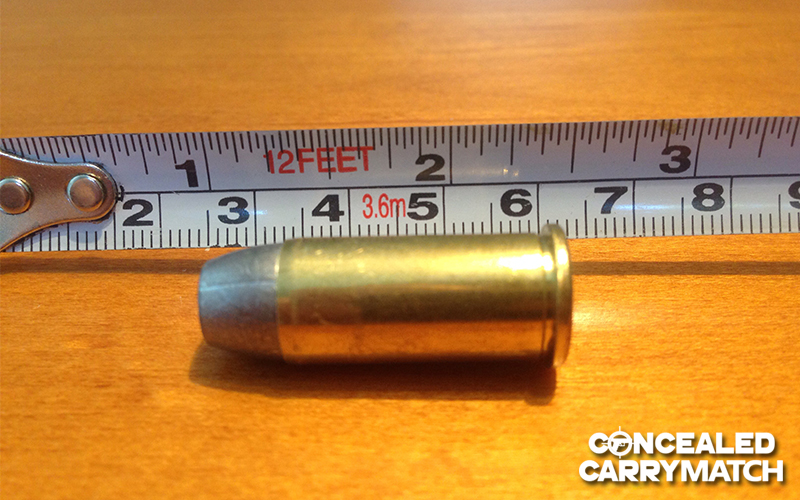
I did a comparison test between 44 Mag/240 grains and 10mm/180 grains in stopping power. The results show that the 40 Mag is consistently excellent and far exceeds the 10mm.
As you know, stopping power includes a lot of small internal variables, including terminal extension, energy, or penetration depth.
The heavier bullet will carry more energy and give a much more perfect firing performance. And 44 Mag is the product with the most specific strengths.
Even so, 10mm is not necessarily a weak cartridge. In a sense, it would be more suitable to be used for self-defense than for combat.
As such, if you’re looking for a high-performance version with absolute stopping power, 44 Mag is a more impressive choice.
Recoil
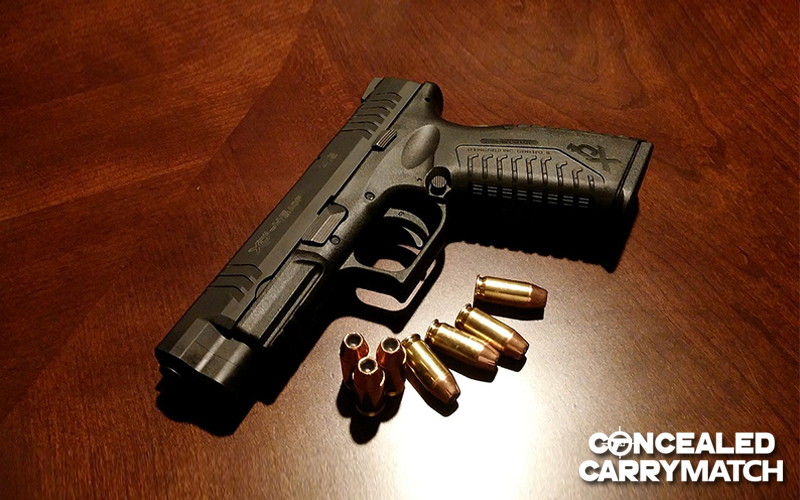
Recoil is the amount of energy a gun exerts on the shooter. The heavier versions often come with more robust and more effective force absorption.
From practical experience through many tests, I feel the recoil with 10mm is much larger than 44 Mag. So, if you are not an experienced shooter, you are very likely to be thrown backward or injure your hand at any time.
Price
40 Mag is quite popular because it is involved in the production of many reputable companies. Therefore, it is easier to find and has a price that is more friendly to your tight budget.
Meanwhile, 10mm ammo has never been easy to buy. You can only find it at a few significant dealers in a few central states for a lot more expensive.
| Criteria | 10mm | 44 Mag |
| Size | 10 × 25mm | 10,9x33mmR |
| Diameter | 0.40 inch | 0.429 inch |
| Neck Diameter | 0.423 inch | 0.457 inch |
| Lengths | 1.26 inch | 1.61 inch |
| Number of grains | 150 to 230 grains | 180 to 300 grains |
| Speed | 1200 fps (PMC Copper 170 Gr. JHP) | 1750 fps (PMC Copper 180 Gr. JHP) |
| Energy | 650 ft-lbs (Hornady 180 Gr. XTP) | 999 ft-lbs (Hornady 200 Gr. XTP) |
Pros and Cons
Each type of ammo will have its pros and cons. Through that, you can find the best one for your intended use.
| 44 Mag | 10mm | |
| Pros |
|
|
| Cons |
|
|
10mm Vs 44 Mag: Which One Is Better?
Both have their strengths to suit different uses.
10mm is the perfect choice for personal protection. Meanwhile, 44 Mag is best for hunting, fighting, and chasing big wild animals. The enormous power of this type can be brutal for even experienced shooters to get used to.
If you use it purely for everyday self-defense situations, the 10mm version can be the top of your choice. Its power is reserved for self-defense instead of hunting, like the 44 Mag version.
With a hunting hobby, I chose the 44 Mag version because the energy and speed it provides are most remarkable. It helps me quickly capture my prey, even at quite a distance.
Stability and accuracy are distinct advantages I see from 44 Mg, which is perfect for my practical desires.
FAQs
Q: Which cartridge, 10mm Auto or .44 Magnum, has more stopping power?
A: Both cartridges are powerful and have significant stopping power. .44 Magnum generally has a reputation for being more powerful due to its larger bullet diameter and heavier bullets. However, the effectiveness of stopping power depends on various factors such as shot placement, bullet design, and individual circumstances.
Q: Which cartridge, 10mm Auto or .44 Magnum, has higher recoil?
A: .44 Magnum typically generates more recoil compared to 10mm Auto. The larger bullet and greater powder charge of the .44 Magnum contribute to the increased recoil. However, perceived recoil can also be subjective and influenced by factors such as firearm design, weight, and the shooter’s proficiency.
Q: Is 10mm Auto suitable for self-defense?
A: Yes, 10mm Auto is considered suitable for self-defense. It offers a good balance of power, capacity, and manageable recoil. The cartridge’s higher velocity and energy make it effective for self-defense purposes. Many reputable ammunition manufacturers produce 10mm loads designed specifically for self-defense scenarios.
Q: Is .44 Magnum suitable for self-defense?
A: Yes, the .44 Magnum is suitable for self-defense, particularly in situations where a more potent cartridge is desired. The larger bullet diameter and higher muzzle energy of the .44 Magnum contribute to its effectiveness. However, the recoil and muzzle blast may be challenging for some shooters to handle, and the revolver platform is typically used for this cartridge.
Q: Can 10mm Auto be used for hunting?
A: Yes, 10mm Auto is capable of hunting various game, including medium-sized animals like deer and hogs. With appropriate bullet selection and shot placement, it can deliver sufficient energy for ethical hunting. However, it’s important to check local regulations and choose suitable loads designed for hunting purposes.
Q: Can .44 Magnum be used for hunting?
A: Yes, the .44 Magnum is a popular choice for hunting due to its power and versatility. It is commonly used for hunting medium to large game, including deer, hogs, and black bears. Various ammunition options are available, including specifically designed hunting loads, making it a capable cartridge for hunting applications.
Q: Is 10mm Auto more suitable for semi-automatic pistols or revolvers?
A: 10mm Auto is primarily chambered in semi-automatic pistols. Its design and dimensions are well-suited for semi-auto platforms, offering higher magazine capacity and faster follow-up shots compared to revolvers. However, there are a few rare exceptions where revolvers have been chambered in 10mm Auto.
Q: Is .44 Magnum only available in revolvers, or are there semi-automatic options as well?
A: While the .44 Magnum is most commonly associated with revolvers, there are a few semi-automatic pistols chambered in .44 Magnum. One notable example is the Desert Eagle pistol, which is available in .44 Magnum among other calibers. However, revolvers are the more prevalent platform for this cartridge.
Q: Can 10mm Auto and .44 Magnum be used for target shooting and plinking?
A: Yes, both 10mm Auto and .44 Magnum can be used for target shooting and plinking. However, the cost of ammunition and the recoil of the .44 Magnum might make it less practical for prolonged sessions of casual shooting. 10mm Auto may offer a more affordable and manageable option for target shooting, especially in semi-automatic pistols.
Q: Are there differences in ammunition availability between 10mm Auto and .44 Magnum?
A: In general, 10mm Auto has wider availability and a broader selection of ammunition compared to .44 Magnum. This is mainly due to the popularity of 10mm Auto in self-defense and competition shooting. While the .44 Magnum is less common, it is still widely available, particularly in hunting and defensive loads.
Q: Which cartridge, 10mm Auto or .44 Magnum, has better long-range performance?
A: .44 Magnum generally has better long-range performance due to its heavier bullets and higher muzzle energy. It retains its velocity and energy better over distance compared to 10mm Auto. However, it’s important to note that both cartridges are primarily designed for short to medium-range engagements rather than long-range precision shooting.
Q: Can the 10mm Auto and .44 Magnum cartridges be handloaded/reloaded?
A: Yes, both 10mm Auto and .44 Magnum can be hand loaded/reloaded. Reloading offers flexibility in tailoring loads to specific needs, such as optimizing for accuracy, managing recoil, or creating specialized hunting loads. However, proper knowledge, adherence to safe reloading practices, and appropriate reloading equipment are essential for safety and performance.
Final Words
Weight, size, speed, power, and cost are different between 10mm vs 44 Mag. In the above article, I have analyzed the differences between these two versions.
I hope it helps you to get more information about them to make an accurate choice. You should rely on your intended use, not merely the pros and cons.
If you are a big fan of hunting, the 44 Mag version is the perfect one. But, if you are defending yourself, opt for the 10mm version.
Thank you for reading!
Last Updated on November 21, 2023 by
